Ankush Mittal
Eye-focused Detection of Bell's Palsy in Videos
Jan 27, 2022



Abstract:In this paper, we present how Bell's Palsy, a neurological disorder, can be detected just from a subject's eyes in a video. We notice that Bell's Palsy patients often struggle to blink their eyes on the affected side. As a result, we can observe a clear contrast between the blinking patterns of the two eyes. Although previous works did utilize images/videos to detect this disorder, none have explicitly focused on the eyes. Most of them require the entire face. One obvious advantage of having an eye-focused detection system is that subjects' anonymity is not at risk. Also, our AI decisions based on simple blinking patterns make them explainable and straightforward. Specifically, we develop a novel feature called blink similarity, which measures the similarity between the two blinking patterns. Our extensive experiments demonstrate that the proposed feature is quite robust, for it helps in Bell's Palsy detection even with very few labels. Our proposed eye-focused detection system is not only cheaper but also more convenient than several existing methods.
* Published in the Proceedings of the 34th Canadian Conference on Artificial Intelligence. Please cite this paper in the following manner: S. A. Ansari, K. R. Jerripothula, P. Nagpal, and A. Mittal. "Eye-focused Detection of Bell's Palsy in Videos". In: Proceedings of the 34th Canadian Conference on Artificial Intelligence (June 8, 2021). doi: 10.21428/594757db.d2f8342b
Detection of Gait Abnormalities caused by Neurological Disorders
Aug 16, 2020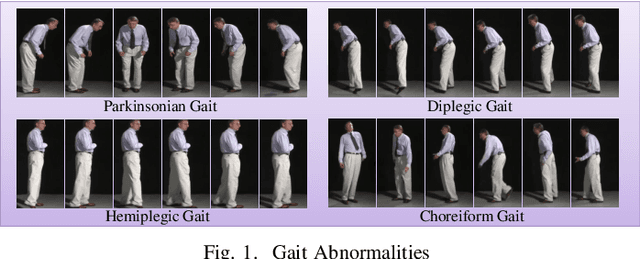
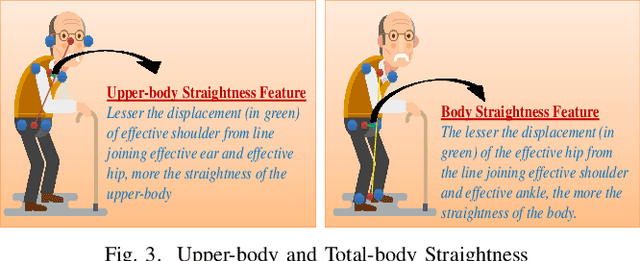
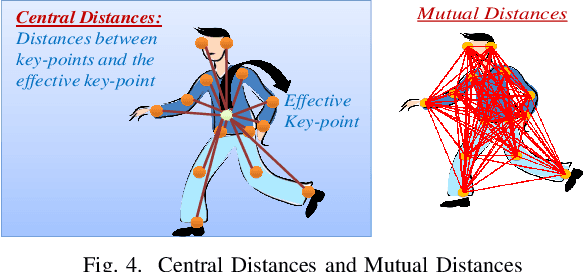
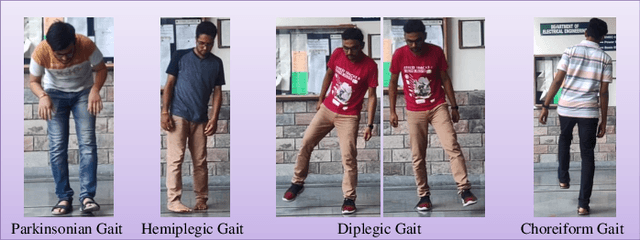
Abstract:In this paper, we leverage gait to potentially detect some of the important neurological disorders, namely Parkinson's disease, Diplegia, Hemiplegia, and Huntington's Chorea. Persons with these neurological disorders often have a very abnormal gait, which motivates us to target gait for their potential detection. Some of the abnormalities involve the circumduction of legs, forward-bending, involuntary movements, etc. To detect such abnormalities in gait, we develop gait features from the key-points of the human pose, namely shoulders, elbows, hips, knees, ankles, etc. To evaluate the effectiveness of our gait features in detecting the abnormalities related to these diseases, we build a synthetic video dataset of persons mimicking the gait of persons with such disorders, considering the difficulty in finding a sufficient number of people with these disorders. We name it \textit{NeuroSynGait} video dataset. Experiments demonstrated that our gait features were indeed successful in detecting these abnormalities.
CLINIQA: A Machine Intelligence Based Clinical Question Answering System
May 15, 2018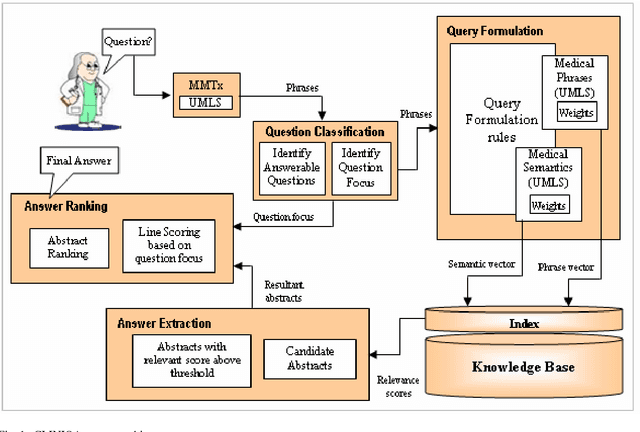
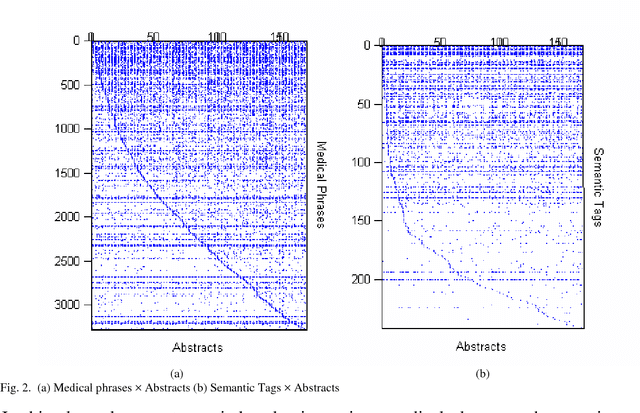
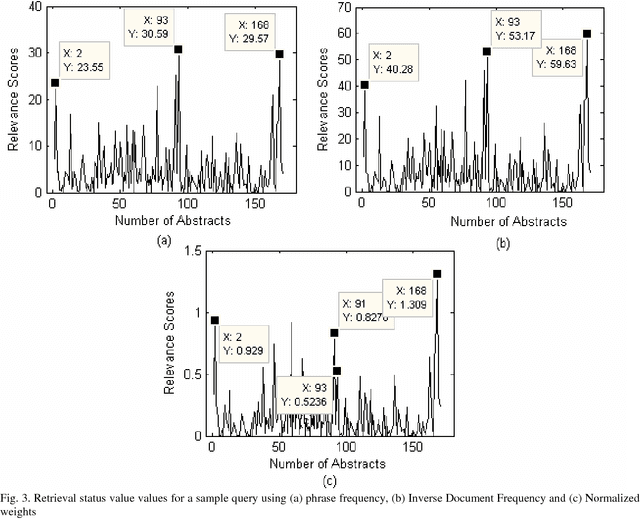
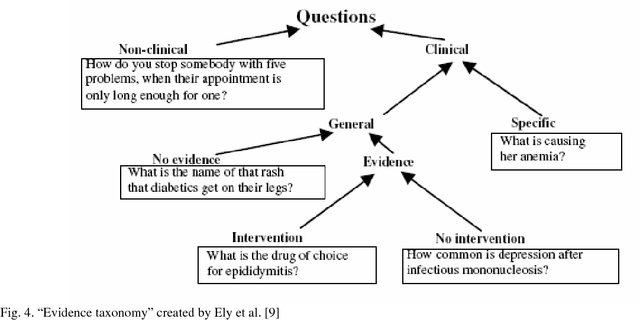
Abstract:The recent developments in the field of biomedicine have made large volumes of biomedical literature available to the medical practitioners. Due to the large size and lack of efficient searching strategies, medical practitioners struggle to obtain necessary information available in the biomedical literature. Moreover, the most sophisticated search engines of age are not intelligent enough to interpret the clinicians' questions. These facts reflect the urgent need of an information retrieval system that accepts the queries from medical practitioners' in natural language and returns the answers quickly and efficiently. In this paper, we present an implementation of a machine intelligence based CLINIcal Question Answering system (CLINIQA) to answer medical practitioner's questions. The system was rigorously evaluated on different text mining algorithms and the best components for the system were selected. The system makes use of Unified Medical Language System for semantic analysis of both questions and medical documents. In addition, the system employs supervised machine learning algorithms for classification of the documents, identifying the focus of the question and answer selection. Effective domain-specific heuristics are designed for answer ranking. The performance evaluation on hundred clinical questions shows the effectiveness of our approach.
On the Benefit of Combining Neural, Statistical and External Features for Fake News Identification
Dec 11, 2017
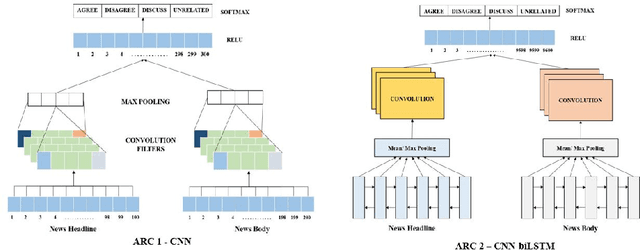
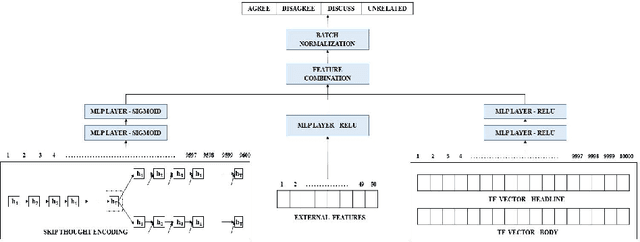

Abstract:Identifying the veracity of a news article is an interesting problem while automating this process can be a challenging task. Detection of a news article as fake is still an open question as it is contingent on many factors which the current state-of-the-art models fail to incorporate. In this paper, we explore a subtask to fake news identification, and that is stance detection. Given a news article, the task is to determine the relevance of the body and its claim. We present a novel idea that combines the neural, statistical and external features to provide an efficient solution to this problem. We compute the neural embedding from the deep recurrent model, statistical features from the weighted n-gram bag-of-words model and handcrafted external features with the help of feature engineering heuristics. Finally, using deep neural layer all the features are combined, thereby classifying the headline-body news pair as agree, disagree, discuss, or unrelated. We compare our proposed technique with the current state-of-the-art models on the fake news challenge dataset. Through extensive experiments, we find that the proposed model outperforms all the state-of-the-art techniques including the submissions to the fake news challenge.
 Add to Chrome
Add to Chrome Add to Firefox
Add to Firefox Add to Edge
Add to Edge